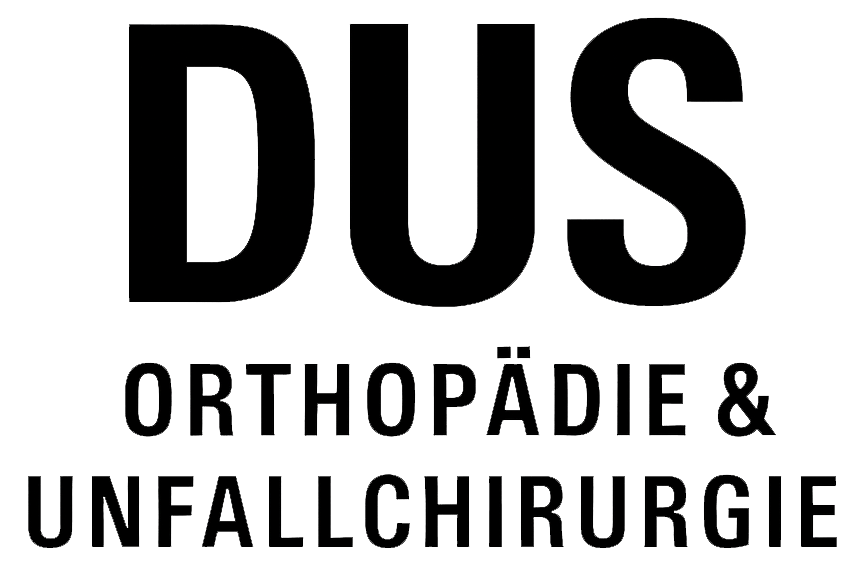Cruciate Ligament Rupture Surgery Düsseldorf
We are your specialised orthopaedic surgeons for cruciate ligament rupture surgery in Düsseldorf.
Cruciate ligament rupture surgery in Düsseldorf
Have you torn your cruciate ligament during sport or due to an incorrect load? Cruciate ligament rupture surgery can ensure that your knee regains more stability in the long term. Some cruciate ligament injuries do not require surgery, but surgery is advisable in many cases. A damaged cruciate ligament can be replaced by surgery with us in Düsseldorf and thus a better long-term result can be achieved. This is not only recommended for competitive athletes. The cruciate ligament is usually replaced, for example, by the patient’s own tendon tissue or (in exceptional cases) by an artificial implant. Find out here how cruciate ligament surgery works.
Advantages of cruciate ligament rupture surgery
Cruciate ligament rupture surgery is performed both as an inpatient and increasingly as an outpatient procedure.
The surgery itself often requires only a few small incisions. Nowadays, a cruciate ligament replacement is usually performed. This has the advantage that the follow-up results are better than with a simple cruciate ligament suture. Cruciate ligament rupture surgery (also called cruciate ligament replacement surgery) at our clinic in Düsseldorf is performed under a low-risk, gentle general anaesthetic.
To replace the cruciate ligament, the semitenidnosus tendon is usually used and, if necessary, another tendon of the pes anserinus. Alternatively, the semitendinosus tendon from the other leg or the quadriceps tendon from the affected knee joint can be used as a replacement. An autologous implant reduces the risk of rejection. An artificial tendon is also conceivable. Healing after a cruciate ligament replacement is usually uncomplicated and takes about 6-8 weeks. Immediately after such a cruciate ligament rupture operation, physiotherapeutic treatment can be started, for example, with us in Düsseldorf, which can of course also take place close to home.

Procedure of cruciate ligament rupture surgery
A cruciate ligament reconstruction is ideally performed within 24 hours after the accident. Otherwise, wait until the first swelling has subsided.
Therefore, it must first be evaluated whether and how long the cruciate ligament has been torn and whether there are concomitant injuries such as a meniscus injury.
After the examination, the review of the diagnostic examinations (e.g. MRI) as well as the diagnosis and surgical indication in one of our practices in Düsseldorf, the choice of tendon is determined which is best suited as an implant. The choice of cruciate ligament replacement also depends on how much stress the knee can expect in the future.
In this knee operation, the damaged cruciate ligament is first removed and replaced in a second step by the previously selected and removed tendon. Only small incisions are necessary for cruciate ligament rupture surgery, through which optics and instruments are passed. Cruciate ligament reconstruction is attached to the femur and tibia to give the knee back the stability it needs.
Brief information on cruciate ligament surgery Düsseldorf
| Procedure: | Cruciate ligament surgery |
| Duration: | 1 - 2 hours |
| Anaesthesia: | General anaesthesia |
| Fit for society: | Approx. 7 -10 days |
| Rest period after the procedure: | 8 to 12 weeks |
Risks of cruciate ligament surgery
If the cruciate ligament rupture operation is carried out at the wrong time, the joint may stiffen, which can only be remedied to a limited extent by physiotherapy. Limited mobility of the knee may also be observed after the operation. This is particularly caused by scar strands or joint adhesions. In addition, soft tissue growths can occur that can limit mobility. It is therefore very important that such cruciate ligament surgery is carried out carefully and that physiotherapeutic exercise is started quickly afterwards.
Other rare risks of such a knee operation can be, for example, venous thrombosis or vascular or nerve injury. Before the operation, our experienced doctors will inform you in detail and personally about the risks of cruciate ligament rupture surgery.
Before the surgery
Before cruciate ligament rupture surgery is performed in one of our practices, a detailed medical history is taken and the injury is intensively examined. This also includes ruling out further damage to the knee – for example, bone fractures. Your knee will therefore be x-rayed and examined using magnetic resonance imaging (MRI) to visualise the bones as well as the soft tissues and ligaments. Afterwards, a decision can be made as to which surgical technique is suitable for your knee.
On the day of the operation, you should come to our practice fasting and, if possible, not put any weight on your knee. The operation itself is then performed minimally invasively under general anaesthesia by our knee specialists.
Duration of cruciate ligament surgery
Cruciate ligament surgery usually takes one to two hours.
After the operation
After successful cruciate ligament surgery, you should not bend your knee more than 90° for the first 6 weeks. The new tendon has to grow together with the bones and “get used” to the new task. It takes time for your knee to regain its usual stability. A stabilising knee joint splint with a joint lock should be worn for about 8 weeks. Immediately after the cruciate ligament rupture operation, you can start to slowly put some weight on your knee again and take physiotherapeutic measures. As a rule, such therapy lasts 8-12 weeks until your knee can be loaded as usual again.
Costs of cruciate ligament rupture surgery
The costs of such cruciate ligament rupture surgery are usually covered by your private or statutory health insurance. For self-pay patients, they depend on the surgical technique and other circumstances. Thus, the price also varies depending on the measures that need to be taken after the surgery. In our practice in Düsseldorf, you will be advised individually on the topic of the costs of cruciate ligament surgery.
Cruciate ligament rupture: How long sick?
Cruciate ligament rupture surgery: How long sick?
We perform cruciate ligament rupture surgery on an outpatient basis. This means that they are allowed to go home with an escort for about 3-4 hours after the operation and recover in their familiar surroundings. Adequate medication with painkillers is of course provided in advance. Adequate medication with painkillers is of course provided in advance. As a rule, you should expect about two to six weeks of sick leave, depending on the case and the physical strain of your job.
How long is a knee swollen after surgery?
Our expertise in the field of cruciate ligament rupture surgery
Our doctors are specialists in orthopaedics and trauma surgery and have extensive experience in the field of cruciate ligament rupture surgery.
Our practice and doctors also trust in the procedure:



LOCATION
Location Düsseldorf-Stockum
Orthopaedist Düsseldorf: Dr. med. Leonid Blüm
Location Düsseldorf-Grafenberg
Orthopaedist Düsseldorf: Panagiotis Karachalios, Dr. Leonid Blüm, Gökhan Dogan
Location Düsseldorf-Oberkassel Heerdt
Orthopaedist Düsseldorf: Alain Dalemans, Turan Ocak and Christopher Arnold



